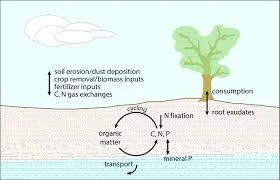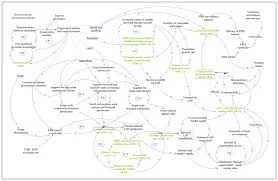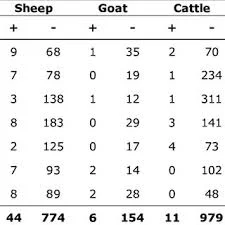Definition: Livestock manure storage capacity refers to the maximum volume of manure a storage facility can hold before needing to be emptied. It's crucial to ensure enough storage to handle manure production throughout the designated storage period.
Click the Translate button(see right) on this post to set your Own Language to understand more perfectly!!
Livestock Manure Storage Capacity Calculator
Continue Definition:
Livestock Manure Storage Capacity
Livestock manure storage capacity refers to the maximum volume of manure a storage facility can hold before needing to be emptied. It's crucial to ensure enough storage to handle manure production throughout the designated storage period. Here's a breakdown of the key factors involved:
Factors:
Number of Livestock: This directly affects the total amount of manure produced daily.
Manure Production Rate (kg/day/livestock): This varies depending on animal species, age, diet, and housing system.
Storage Duration (days): This depends on regulations, climate, and manure management practices. Manure needs to be stored for a specific period before application to allow for decomposition and nutrient stabilization.
Sample Values:
Factor Description Sample Value
Number of Livestock Total number of animals of a specific type 100 Dairy Cows
Manure Production Rate Daily manure production per animal 45 kg/day/cow (dairy cow)
Storage Duration Number of days manure needs to be stored 180 days (depending on regulations and climate)
Calculation Example:
Thee required storage capacity for the scenario above:
Total Daily Manure Production:
Number of Livestock * Manure Production Rate/livestock
100 cows * 45 kg/day/cow = 4500 kg/day
Total Manure Production for Storage Duration:
Total Daily Manure Production * Storage Duration
4500 kg/day * 180 days = 810,000 kg
Therefore, the minimum required storage capacity for this scenario is 810,000 kg of manure.
Additional Considerations:
Manure Type: Solid manure (bedded stalls) has a lower volume than liquid manure (slurry systems). Account for this difference when estimating storage needs.
Storage Losses: Factor in potential losses due to evaporation (liquid manure) or decomposition (solid manure) when determining capacity.
Safety Factor: Adding a 10-20% buffer to the calculated capacity is recommended to account for unforeseen circumstances.
Suggestions:
Consult local regulations for specific storage duration requirements in your area. Research manure characteristics for your specific livestock type and housing system to get accurate production rates. Consider using manure storage calculators available online or from agricultural extension services. Regularly monitor manure levels in your storage facility to ensure you have enough capacity before the next application period.
How is it possible to Earn Money using the knowledge of Crop Pest Life Cycle Calculation in our practical life?????
There are several ways to leverage your knowledge of livestock manure storage capacity calculation to earn money:
Consulting Services:
Manure Management Consultant: Offer your expertise to farms and livestock operations. Help them:
Calculate storage requirements: Use your knowledge to assess their livestock numbers, manure production rates, and desired storage duration to recommend the appropriate storage capacity.
Design manure storage facilities: Advise on storage structures like lagoons, pits, or composting facilities, considering factors like capacity, cost, and environmental regulations.
Develop manure management plans: Create customized plans that optimize manure storage, handling, and utilization, maximizing nutrient value and minimizing environmental impact.
Work with Equipment Manufacturers: Offer your expertise to companies that sell:
Manure storage equipment: Help them train their sales staff to advise farmers on choosing the right storage solutions based on calculated capacity needs.
Manure handling equipment: Assist in recommending equipment suitable for the specific type and volume of manure being stored.
Freelance Work:
Develop online calculators: Create user-friendly online tools that allow farmers to input their livestock data and receive estimated manure storage requirements.
Write articles and blog posts: Share your knowledge by creating content on topics like calculating storage needs, regulations, and best practices for manure management.
Additional Revenue Streams:
Offer educational workshops and training sessions: Teach farmers and agricultural professionals how to calculate storage capacity and implement effective manure management practices.
Partner with construction companies: Collaborate with companies that build manure storage facilities, offering expertise during the design and planning stages.
Success Factors:
The success of these approaches depends on several factors:
Expertise: Strong knowledge of manure characteristics, storage regulations, and best practices is crucial.
Communication Skills: Ability to explain complex calculations and regulations to farmers in a clear and concise way.
Building Relationships: Developing trust and credibility with potential clients in the agricultural sector.
By combining your knowledge with effective communication and business development skills, you can create a niche in the livestock industry and earn money by helping farmers manage their manure effectively.
Do YOU Want To Earn Money In Various Ways, Click The Link & Explore Your Field of Interest!!!





































